<< Previous | Displaying results 6576-6600 of 6769 for "" | Next >>
A segregated drinking fountain on the county courthouse lawn in Halifax, North Carolina. Photographed by John Vachon in April 1938.
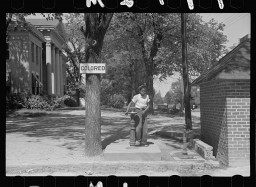
The Ku Klux Klan marches down Pennsylvania Ave in Washington, DC. Photograph by Harris & Ewing, 1926.

Cartoon depicting the United States' response to the refugee crisis in Europe, as well as the racism and discrimination African Americans faced at home. The Pittsburgh Courier, April 16, 1938. Page 10. Domestic concerns in the United States, including unemployment and national security, combined with prevalent antisemitism and racism, shaped America's immigration policies, responses to Nazism, and willingness to aid European Jews.
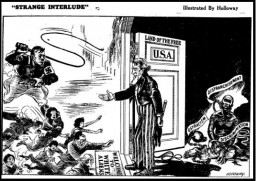
A German soldier guards a group of Poles and Jews who have been rounded-up and forced to stand in a line with their arms raised, Poland, September 1939.

German troops view the burning of a village in the Rogachyevo district of Gomel, Belarus, 1941.
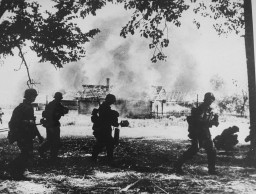
A German guard sitting on the end of a 20mm gun platform watches over 50,000 Soviet Prisoners of War (POWs) at Stalag 349, Ukraine, August 14, 1941.
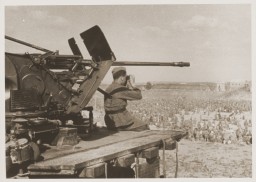
A Hochheim parade float proceeds down the Kirchstrasse, passing by a display box for Der Stürmer, an antisemitic newspaper. The display box bears the slogan, "Without a solution to the Jewish question, there is no salvation for the German people." Hochheim am Main, Germany, circa 1934–1940.
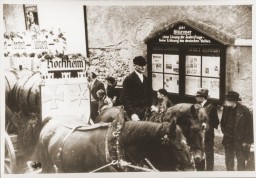
Adolf Hitler (center) walks and converses with other Nazi officials, date unknown.
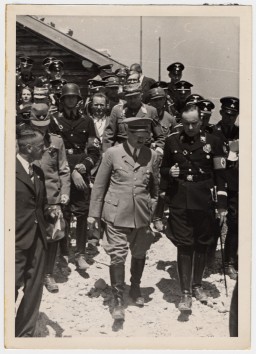
Cheering spectators greet Hitler upon his departure for the Reichstag session at which the Enabling Act was passed. The act allowed the government to issue laws without the consent of Germany’s parliament, laying the foundation for the complete Nazification of German society.
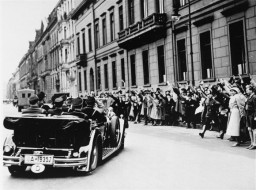
Dorrith was born in Kassel, Germany, in December 1938. Her parents were Hans and Trudi Oppenheim. Following increased anti-Jewish measures, Dorrith was among the children sent on Kindertransports to find refuge in the United Kingdom. She left Germany on July 24, 1939. She never saw her parents again. They were deported to Auschwitz, where they perished in October 1944.
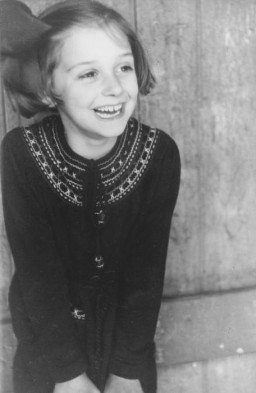
On the day of the vote on the so-called Enabling Act, the Nazi leadership sent SS troops into the makeshift Reichstag building, formerly the Kroll Opera, to intimidate other political parties. Berlin, Germany, March 23, 1933. The Enabling Act allowed the Reich government to issue laws without the consent of Germany’s parliament, laying the foundation for the complete Nazification of German society. The full name of the law was the “Law to Remedy the Distress of the People and the Reich.”
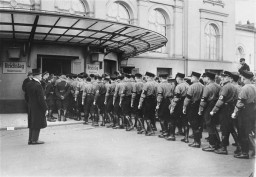
Photograph of Esther Lurie and a friend, Jose, who were both students at the Institute of Art in Brussels. Here they are enjoying refreshments on an outdoor terrace in the early 1930s. Lurie would later flee Europe as war became imminent. Brussels, Belgium, 1931–1933.
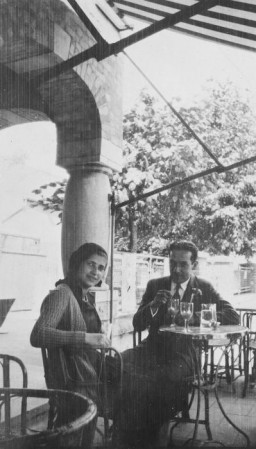
View of the Sobibor camp gate in the spring of 1943. Jews deported to the Sobibor killing center were driven through the gate into the camp on foot, by truck or horse-drawn cart. The train track led through a separate entrance to the right onto the site. Pine branches were braided into the fence to make it difficult to see in from the outside. This image comes from an album and collection kept by Johann Niemann, who became deputy commandant of the Sobibor killing center after holding positions in the…
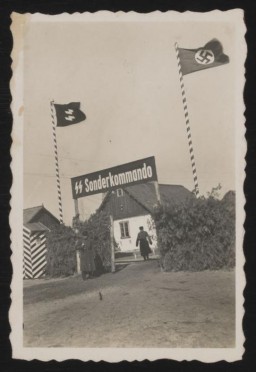
Rare photograph showing Sobibor killing center personnel relaxing and posing, all while implementing the mass murder of at least 167,000 innocent Jews.
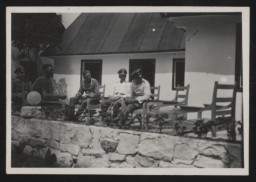
Rare photograph showing a view of the German personnel living quarters at the entrance to the Sobibor killing center in German-occupied Poland.
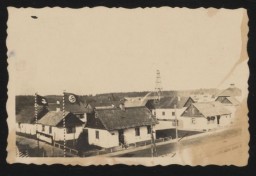
Rare image of the Sobibor killing center, taken from an album of photos belonging to Sobibor deputy camp commandant Johann Niemann.
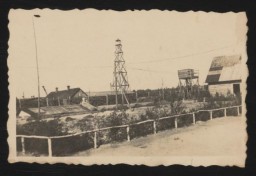
Rare image of the site of the Sobibor killing center, taken from an album of photos belonging to Sobibor deputy camp commandant Johann Niemann.
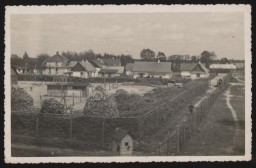
A group photograph including Johann Niemann in front of the old officers' dining room in the Sobibor killing center in German-occupied Poland, spring 1943.
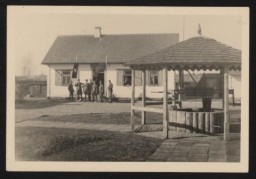
View of a building that served as a dining room for the Germans and as lodgings for the camp commanders at the Sobibor killing center in German-occupied Poland.
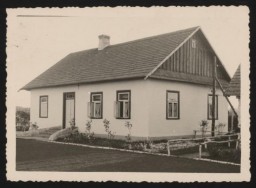
Art handlers at the Schloss Niederschoenhausen storage depot hold a section of Emil Nolde’s confiscated “Das Leben Christi,” 1937. The Nazi regime confiscated the work as "degenerate" art.
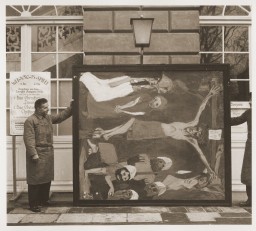
Works of confiscated art—including those by Pablo Picasso, Henri Matisse, and Vincent van Gogh—line the walls of the Schloss Niederschoenhausen storage depot. The Nazi regime confiscated the works as "degenerate" art.
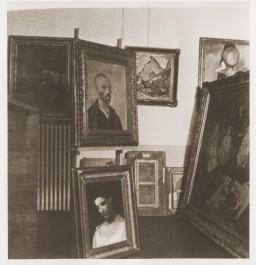
Troops supporting Hitler arrive in Munich during the Beer Hall Putsch on November 9, 1923.
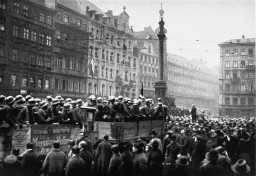
Uniformed members of the SA parade down a city street in Duisburg during a Nazi rally, circa 1928.
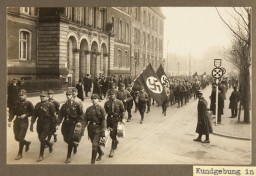
Adolf Hitler, Julius Streicher, and other dignitaries review passing Nazi Party members at the Deutscher Tag (German Day) celebration in Nuremberg, September 02, 1923.
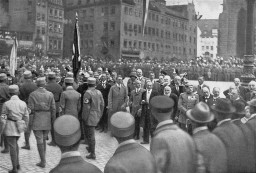
SS officers and German nurses gather during the dedication ceremony of the new SS hospital in Auschwitz, September 1, 1944. Among those pictured are Karl Höcker, Josef Kramer, and SS-Hauptsturmführer Heinrich Schwarz.
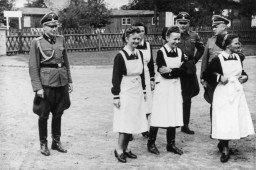
We would like to thank Crown Family Philanthropies, Abe and Ida Cooper Foundation, the Claims Conference, EVZ, and BMF for supporting the ongoing work to create content and resources for the Holocaust Encyclopedia. View the list of donor acknowledgement.